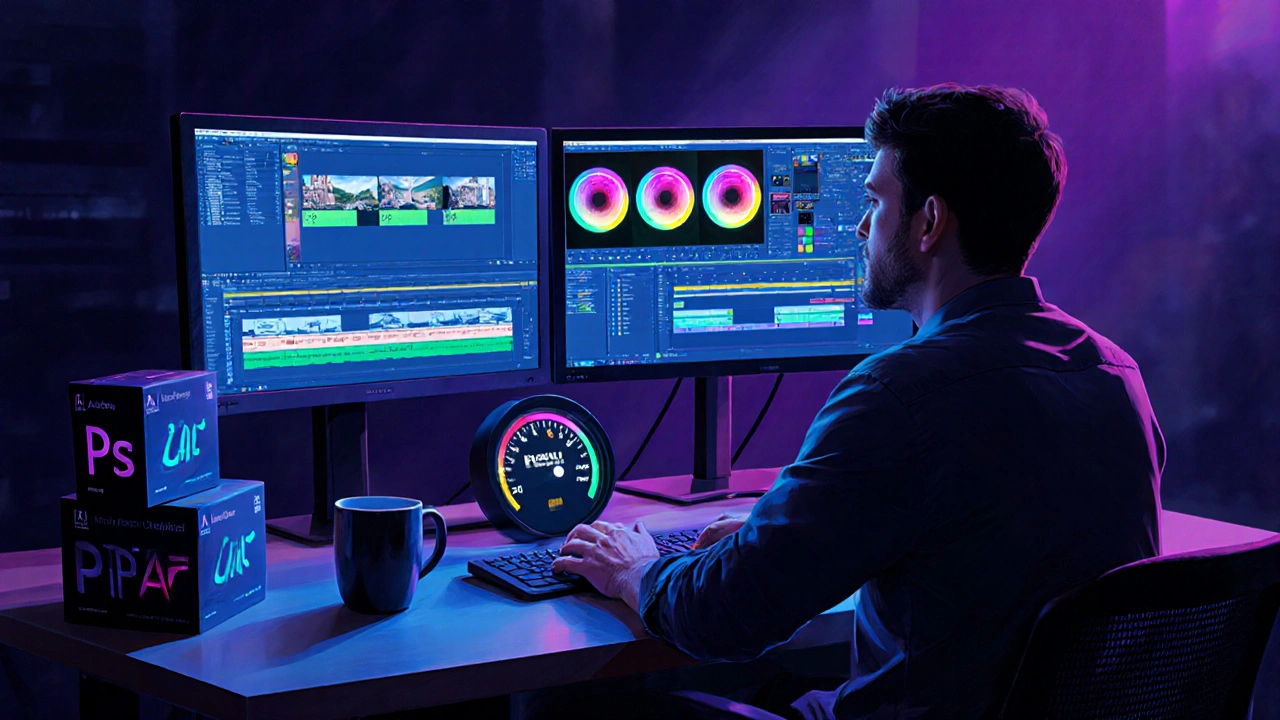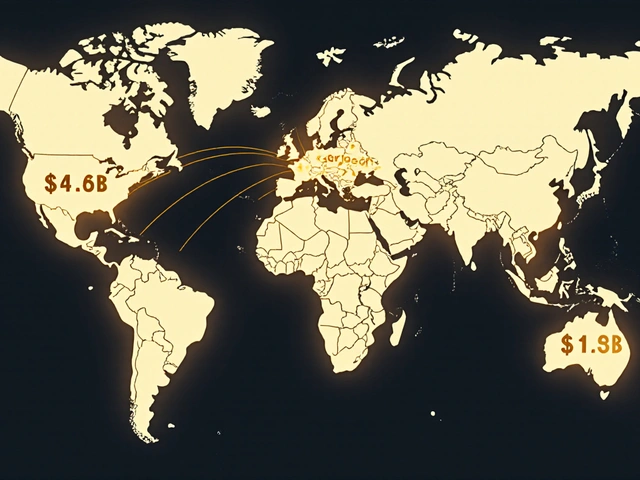13
Professional Video Editor Pricing: How Much Do Editors Charge in 2025

Video Editor Cost Calculator
Estimate your video editing costs based on 2025 industry rates from the Australian Video Production Association and Upwork data.
Project Details
Estimated Cost Range
Note: These are base estimates. Actual costs may vary based on specific project requirements and editor experience.
Estimated Time:
Pricing Model:
Want to know how much a professional video editor rates can vary? Whether you’re a YouTuber, a small business, or a brand launching a campaign, the cost of hiring a video editor can feel like a mystery. This guide breaks down every pricing model, the factors that push numbers up or down, and what you should expect from entry‑level freelancers to full‑service agencies in 2025.
What pricing models are out there?
Professional video editor is a specialist who assembles raw footage, adds effects, and delivers a polished final product. Editors don’t all charge the same way. Understanding the four main models helps you compare apples to apples.
- Hourly rate is the amount charged for each hour of work. Ideal for projects with uncertain scope or when you need quick edits.
- Project‑based pricing (also called flat‑fee) covers the entire job from start to finish. Best for well‑defined videos such as a 2‑minute explainer or a product demo.
- Per‑minute pricing charges a set fee for each finished minute of video. Common in commercial work where the final length drives production effort.
- Retainer contract locks in a set number of hours or projects per month for a fixed fee. Useful for brands that need ongoing video content.
| Model | Typical Range (USD) | Best For | Pros | Cons |
|---|---|---|---|---|
| Hourly | $30 - $150 | Short turn‑around edits, uncertain scope | Pay only for time used | Hard to estimate total cost |
| Project‑Based | $500 - $8,000 | Defined deliverables (e.g., 2‑min promo) | Clear upfront cost | Scope creep can lead to extra fees |
| Per‑Minute | $50 - $300 per final minute | Commercials, training videos | Scales with final length | Long videos become pricey quickly |
| Retainer | $1,000 - $5,000 per month | Ongoing content pipelines | Predictable budgeting | Requires commitment |
Key factors that influence cost
Even within a single model, rates can swing wildly. Here’s what typically drives the numbers.
- Experience level: New freelancers may charge $30‑$60/hr, while senior editors with a track record of award‑winning work can command $120‑$180/hr or higher.
- Project complexity: A simple jump‑cut montage is cheap. Adding color grading (the process of correcting and styling color) or intricate motion graphics can add $200‑$800 per minute.
- Turnaround time: Rush jobs (e.g., 48‑hour delivery) often incur a 25‑50% premium.
- Software & hardware: Editors using premium suites like Adobe Premiere Pro, DaVinci Resolve Studio, or high‑end workstations may pass licensing and equipment costs to you.
- Location: Rates in North America and Western Europe tend to be higher than in Australia, Southeast Asia, or Eastern Europe. Australian editors in Brisbane typically charge 5‑10% less than their US counterparts.
- Additional services: Including sound design, voice‑over syncing, or subtitles adds $50‑$200 per hour.

Typical 2025 rates by editor type
Data from the 2024 Australian Video Production Association (AVPA) survey and the global freelance platform Upwork (2025) give a realistic picture.
- Entry‑level freelancers: $30‑$60/hr; $400‑$1,200 per short video (up to 2minutes).
- Mid‑level freelancers (3‑5 years experience): $60‑$100/hr; $1,200‑$3,500 per typical corporate video (2‑5minutes).
- Senior freelancers / boutique specialists: $100‑$180/hr; $3,500‑$8,000 for high‑production pieces (5‑10minutes).
- Full‑service agencies: $150‑$300/hr; $8,000‑$25,000 for end‑to‑end campaigns, including pre‑production, shooting, and post‑production.
Remember, these are base numbers. Adding color grading, motion graphics, or premium sound design can push a $5,000 project to $7,500 or more.
Choosing the right model for your project
Use this quick decision flow:
- If you have a tight deadline and need flexibility → Hourly.
- If your video scope is fully defined (script, storyboard, length) → Project‑based.
- If you’re producing many similar videos (ads, training modules) → Per‑minute or Retainer.
- When you’re unsure about exact needs → start with an hourly estimate, then lock in a flat fee once the scope solidifies.
How to get accurate quotes and avoid hidden fees
Getting a clear, predictable budget is easier when you ask the right questions.
- Request an itemized breakdown: editing, color grading, graphics, sound design, revisions.
- Clarify the revision limit. Most editors include 2‑3 rounds; extra rounds may cost $30‑$50/hr.
- Ask who owns the raw footage and final assets. Transfer of ownership can add a one‑time $200‑$500 fee.
- Check for software licensing surcharges. If the editor needs a specific plug‑in for you, ask who pays for it.
- Confirm the delivery format (e.g., 4K ProRes, YouTube‑ready MP4). Formatting work can be billed separately.

Where to find reliable editors in 2025
Depending on budget, timeline, and preferred collaboration style, you have three main channels.
- Freelance marketplaces like Upwork, Fiverr, and Mandy.com host thousands of video editors. Look for verified badges, portfolio samples, and client reviews.
- Production agencies such as Sydney‑based Hushed Studio or Melbourne’s EdgeCut Media offer end‑to‑end services and project managers, but at a premium.
- Local studios in Brisbane, Gold Coast, or Canberra provide face‑to‑face communication and often have in‑house post‑production suites.
When you shortlist candidates, ask for a short test edit (e.g., 30‑second clip). It reveals turnaround speed, communication style, and whether their aesthetic matches your brand.
Quick cheat sheet: What to expect
| Editor Type | Hourly Rate | Flat Fee (2‑min video) | Notes |
|---|---|---|---|
| Entry‑level freelancer | $30‑$60 | $500‑$1,200 | Good for simple cuts, limited graphics. |
| Mid‑level freelancer | $60‑$100 | $1,200‑$3,500 | Includes basic color correction and titles. |
| Senior freelancer / boutique | $100‑$180 | $3,500‑$8,000 | Adds motion graphics, advanced grading. |
| Agency | $150‑$300 | $8,000‑$25,000 | Full production pipeline, multiple revisions. |
Frequently Asked Questions
How do I know if an hourly quote is realistic?
Compare the total estimated hours to similar projects you’ve done or to industry benchmarks. A 5‑minute corporate video typically requires 15‑30 editing hours; if the quote exceeds that range, ask for a detailed task breakdown.
Can I negotiate a lower rate for bulk video orders?
Yes. Many freelancers and agencies offer volume discounts when you commit to 5‑10 videos upfront. Expect 10‑20% off the standard flat fee.
What hidden costs should I watch out for?
License fees for premium plug‑ins, extra revisions, high‑resolution renders (4K vs 1080p), and asset transfer fees are common surprise items. Always ask for a line‑item quote before signing.
Is it worth paying more for an agency instead of a freelancer?
Agencies bring project management, multiple specialists (editors, colorists, sound designers), and stricter quality control. If your brand needs consistent style across many assets, the higher cost often pays off in time saved and brand cohesion.
How fast can I get a 2‑minute video done?
A seasoned freelancer can deliver a polished 2‑minute edit in 24‑48hours if the raw footage is organized and you accept a standard (no‑rush) revision policy. Rush delivery may add 25‑50% to the quote.










Tiffany Ho
October 13, 2025 AT 05:32Great rundown, very helpful!
michael Melanson
October 19, 2025 AT 17:10I appreciate the clear breakdown of hourly versus project‑based rates. It makes it easier to match a budget with the right type of editor. For anyone new to hiring, start with a modest hourly test to see how the workflow feels.
lucia burton
October 26, 2025 AT 03:15The video production ecosystem in 2025 has truly matured, and the pricing structures reflect that evolution. When you examine the hourly tier, you’ll notice that entry‑level freelancers often bundle basic cuts with minimal color correction, which explains the $30‑$60 range. Mid‑level talent, typically with three to five years of experience, brings a more refined skill set-advanced transitions, sound syncing, and modest motion graphics-justifying the $60‑$100 bracket. Senior freelancers and boutique studios, on the other hand, command $100‑$180 per hour because they provide cinematic color grading, 3‑D motion design, and often proprietary plug‑ins that elevate a brand’s visual language.
Project‑based pricing is ideal for well‑scoped deliverables. A two‑minute corporate explainer usually falls between $500 and $3,500 depending on complexity. If the brief includes custom animation, you should anticipate an additional $800‑$1,200 for asset creation. The per‑minute model scales linearly, which is perfect for campaigns that require multiple versions of the same core video; however, the $50‑$300 per final minute can balloon quickly if the edit demands heavy grading or sound design.
Retainers offer predictability for brands churning out weekly content. A $1,000‑$5,000 monthly fee typically includes a set number of hours-often 10‑30-plus a buffer for quick turn‑arounds. The downside is the commitment; you must maintain a steady flow of projects to justify the expense. Rush premiums, ranging from 25‑50%, are non‑negotiable because they compress the editor’s schedule and often force overtime, which is reflected in the higher hourly rate.
Geography still plays a subtle role. While Australian editors charge slightly less than their North American counterparts, the difference has narrowed as remote collaboration tools improve. Moreover, licensing costs for software like DaVinci Resolve Studio add $200‑$300 per seat annually, a factor that freelancers often pass on to clients as a line‑item.
Finally, always request an itemized quote. Breakdowns that separate editing, color grading, graphics, and revisions prevent surprise fees. A well‑structured contract should also define ownership rights for raw footage and final renders-otherwise you might face an unexpected $200‑$500 transfer fee.
Denise Young
November 1, 2025 AT 14:20Wow, thanks for the deep dive, Michael-though I’ve seen the same advice recycled a hundred times, it never hurts to hear it again. In reality, most clients underestimate the hidden costs of licensing premium plug‑ins; those extra $300‑$500 line items can turn a $2,000 project into a $2,500 nightmare. And let’s not forget the revision creep-two rounds are standard, but the third? That’s where the budget silently explode. If you want to avoid that, lock in a clear scope up front, even if it feels a bit controlling. Otherwise you’ll be stuck negotiating the price of a simple lower‑third after the deadline passes.
Sam Rittenhouse
November 8, 2025 AT 01:24This guide really captures the emotional rollercoaster of budgeting for video work. When I first started, I thought $30 an hour was cheap, but the hidden cost of high‑end hardware and software subscriptions quickly added up. The stress of juggling revision limits and turnaround expectations can feel dramatic, especially for smaller creators who wear many hats. Knowing the typical ranges helps set realistic expectations and reduces that anxiety.
Peter Reynolds
November 14, 2025 AT 12:29Good info. I’ll keep it in mind when I next need a quick edit.
Fred Edwords
November 20, 2025 AT 23:33Peter, you’re spot‑on; just remember that the hourly ceiling of $150‑$300 for agencies includes project management, multiple specialists, and often a built‑in buffer for client feedback loops. It’s not just the edit itself; it’s the entire ecosystem that drives the price.
Sarah McWhirter
November 27, 2025 AT 10:38Sure, the numbers look legit-until you realize the “agency” rates are actually funded by a secret cabal of AI‑driven bots that bundle your footage with their own ad revenue. Just saying.
kelvin kind
December 3, 2025 AT 21:43Clear and concise, thanks.
Ian Cassidy
December 10, 2025 AT 08:47From a technical standpoint, the per‑minute pricing model aligns with compute‑intensive rendering pipelines-more frames equal more GPU cycles, which translates directly into cost. Keep that in mind when scaling up your campaign.